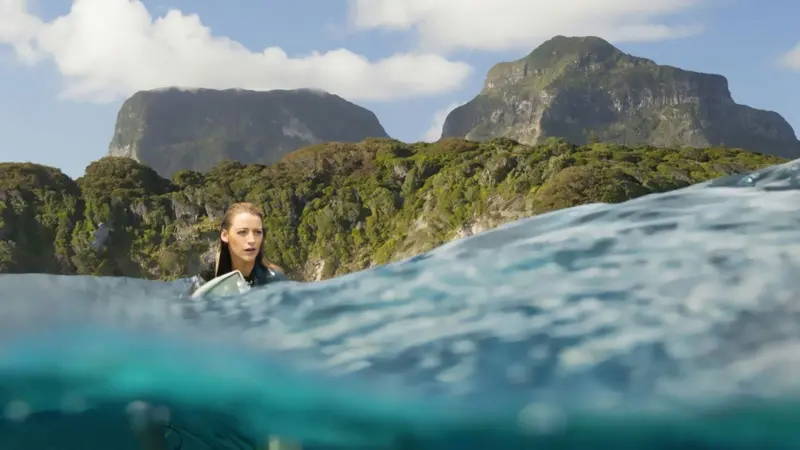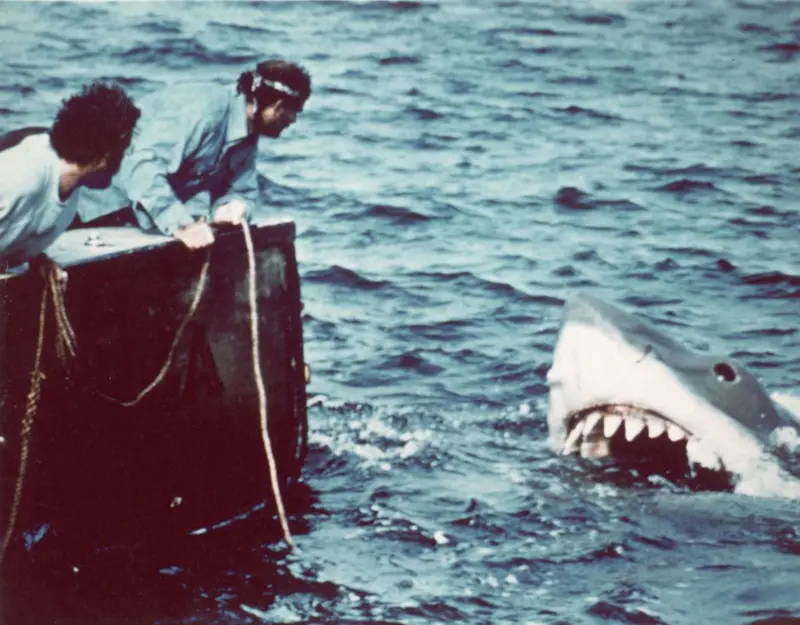What is known about the event that inspired the movie Jaws?

The political elite of the period were marching on the beach and a "sea creature" was swimming on the shore.
Science was largely unaware of this creature, and it wasn't even an adult.
This 9-foot-tall, sharp-toothed "monster" would soon take both Wilson and World War I off the front pages of newspapers.
Over time, the war was forgotten, but the Great White Shark became a movie star.

In July 1916, five Americans who went swimming off the Jersey shore were attacked and four of them were killed by a young great white shark.
Between July 1 and 12, a shark roamed the 112-kilometer-long ocean coast, causing terror in a way that has never been seen before in history or to this day.
He hunted his victims along the coasts from a coastal town in Atlantic City to a river flowing into New York Harbor.
The first to die was Charles Vansant, a recent college graduate from Beach Haven, whose screams were mistaken for a joke by beachgoers.
Scientists at the time believed that sharks did not have jaws strong enough to break human bones.
It was the first fatal shark attack in recorded U.S. history. But there was no Discovery Channel back then, and no one knew about these things. The young shark would change all that.
After the second death, beachgoers found a half-eaten, bloody body and fled the beach in terror.
This real-life "monster" immediately became the front page of the New York Times. Another swimmer was killed by a shark in a river mouth, and another died "while trying to fight the monster."
Mayors, not wanting to lose the money brought in by holidaymakers, tried to deny what was happening, until horrors led to the closure of facilities and politicians began asking scientists for help.
An expert from the American Museum of Natural History initially struggled to identify the killer shark, before zeroing in on the legendary man-eating Carchadon carcharias, or great white shark.
As panic swept the area, angry men grabbed their rifles and pitchforks and went hunting for the shark, which was eventually killed by someone whose boat it had attacked.
Does this story sound familiar? It's the true story of Jaws, literally buried beneath the waves.
I discovered the incident in 2001 while living in New Jersey and recounted it in my book Close To Shore. Peter Benchley moved the events from New Jersey to the fictional resort town of Amity on Long Island in his 1974 bestseller Jaws.
The shark that Benchley wrote about also killed four people, including a victim who died in the mouth of a river. A would-be hero who fought the shark also lost his life. The mayor initially refused to accept what had happened because he didn't want to lose tourism revenue, but then, out of fear, he enlisted the help of a scientist.
The fanciful fish scientist from the New York Aquarium in Coney Island first had trouble identifying the killer shark species and then focused on the great white shark.
He was warning people about what happened in 1916 and that it could happen again. Angry men started a shark hunt, and the monster was killed by a hero whose boat it attacked.
In an interview I did with Benchley, he said that the idea for the novel stemmed from his lifelong fascination with shark attacks.
He later described his research in the foreword he wrote to subsequent editions of Jaws:
"Have sharks stayed in one place and killed people over and over again? Absolutely. Remember the shark that killed four people in a New Jersey river in 1916. I told interviewers over and over again that everything in Jaws really happened."
Benchley's novel was a global cultural event, with Cuban leader Fidel Castro saying that the book's Spanish title, Tiburon, was a metaphor for savage capitalism.
Others thought it was about Richard Nixon and the Watergate scandal. The book stayed at the top of the New York Times bestseller list for 44 weeks.
In 1975, Steven Spielberg's Jaws was released.
 A scene from the 1975 film Jaws. American actor Richard Dreyfuss (left) as marine biologist Hooper and British writer and actor Robert Shaw as shark hunter Quint, aboard Quint's fishing boat 'Orca'. Directed by Steven Spielberg, the film featured a mechanical giant shark. Also starring Roy Scheider and Lorraine Gary, the film was one of the first 'Summer Blockbusters'.
A scene from the 1975 film Jaws. American actor Richard Dreyfuss (left) as marine biologist Hooper and British writer and actor Robert Shaw as shark hunter Quint, aboard Quint's fishing boat 'Orca'. Directed by Steven Spielberg, the film featured a mechanical giant shark. Also starring Roy Scheider and Lorraine Gary, the film was one of the first 'Summer Blockbusters'.
The terror of a baby shark in New Jersey turned into a giant, fictional mechanical monster in the 1970s, and swimming was never the same again.
The film was Hollywood's first major summer release, and major franchises from Star Wars to Jurassic Park followed the same business model.
The film actually frightened leading shark experts, such as George Burgess of the University of Florida, because it falsely portrayed the great white shark as a vengeful predator of humans. In fact, sharks do not target humans except in rare cases.
Burgess says that because of the film, dozens of shark hunts have been conducted off the east coast of the United States, nearly decimating the shark population.
But Jaws also helped to boost the shark and ocean conservation movement. It motivated shark biologists to do more and better research, increased research budgets, and helped scientists understand that sharks are part of the natural world.
Burgess says a great white shark was responsible for the 1916 attack, but other experts believe a bull shark was responsible for the attack at the mouth of the river. The mystery has never been solved.
According to Burgess, "Tens of thousands of people around the world who saw the film developed a new phobia."
"They couldn't even put their feet in the water because of Jaws."
Cumhuriyet





